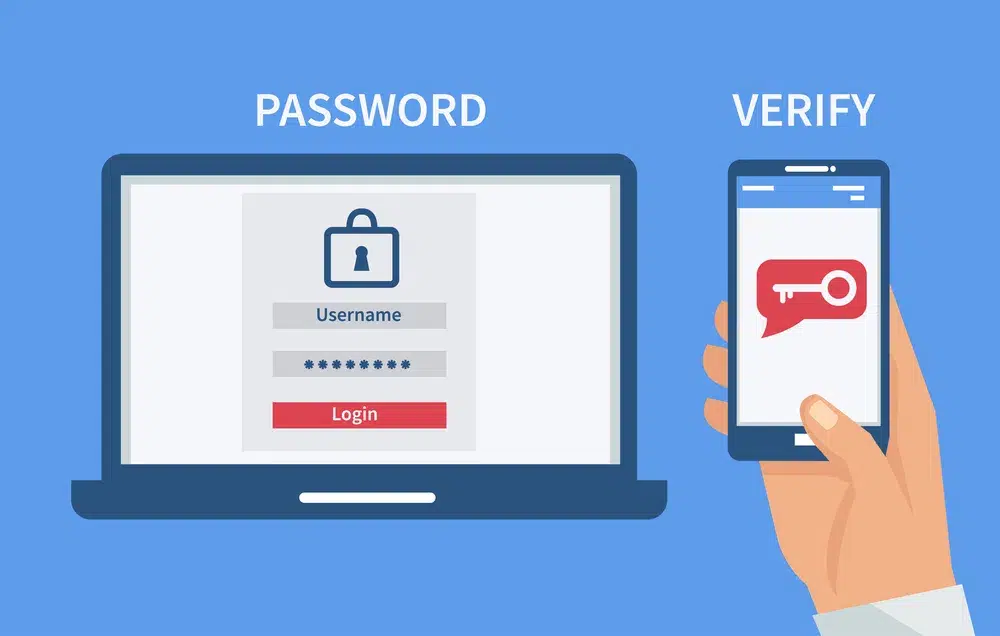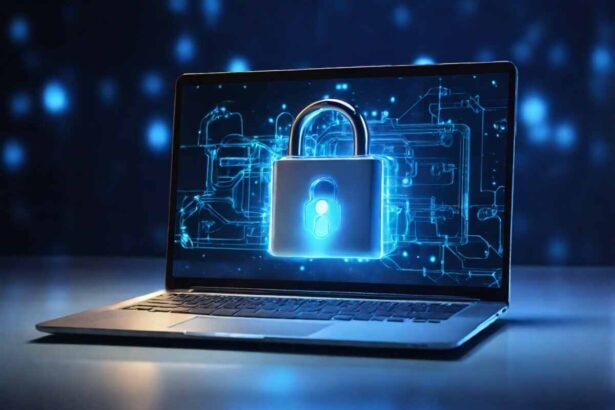To boost your online security and safeguard your vital information, it’s crucial to understand 2-factor authentication as the backbone of your digital fortress. Are you prepared to dive deep into understanding 2FA and why it will be an essential tool for your online security? Fortify your online presence with 2FA.
- Introduction
- Overview of Two-Factor Authentication
- Why Is 2FA Important?
- Benefits of Using 2FA
- Risks of Not Using 2FA
- Types of 2FA
- TOTP (Time-based OneTime Password)
- SMS OTP-One Time Password
- Push Notifications
- Hardware Tokens
- Biometric Authentication
- How 2FA Works
- Real-World Instances of How 2FA Is Used
- Adding Two Factor Authentication To Your Accounts.
- Authy
- Conclusion
2FA is an essential security protocol that requires the use of two layers of proof before permitting entry. Two-factor authentication relies on utilizing what you have (like, handset) and what you know (password) increasing levels of protection manifold, and creating powerful barriers against unlawful entrance to cyberspace vulnerability.
Introduction
Today, keeping our online accounts safe and our private info secure is imperative in a world driven by digits. 2FA – The Power Broker for Digital Defense. Especially when it comes to safeguarding your crypto exchange wallet,2FA is highly recommended.
This detailed guide takes us through the fundamentals of two-factor authentication, its significance, main types, how it functions, practical uses, enabling it in your account, dos and don’ts, and prospects of future technology advancements.
Twitter has more to say on this security protocol.
Overview of Two-Factor Authentication
Two-factor authentication (2FA) refers to a secure technique whereby a user gets authorized only if he presents two specific forms of authentication. These factors typically fall into three categories: something you know, like a password, something you have like a mobile device or even something you are, such as a fingerprint. This blending provides substantially high security when comparing its use in just one factor.
Why Is 2FA Important?
Given that cyber threats are growing, relying only on passwords as far as account security is concerned cannot be said to be adequate in this day. Accounts can become vulnerable as passwords that are stolen, guessed, or even cracked.
Secondly, 2FA provides a further layer of security that ensures that, even if one has the password, it is hard for the malicious party to get into an account unlawfully.
Benefits of Using 2FA
2FA tends to make along with a number of benefit factors, let look at some of these positive benefits:
Enhanced Security: Two-Factor Authentication (2FA) -this supplementary measure can effectively minimize the likelihood of intruders gaining access to your account.
Mitigates Phishing Attacks: Even if a user is duped into revealing his or her password, the intruder would still need the second authentication factor to get in.
Here is an article that elaborates on how one can full protect yourself from phishing attack.
Secures Sensitive Transactions: The 2FA provides an extra layer of security for any sensitive transactions, such as financial transfers, verifying that the person using the password is a real user.
Risks of Not Using 2FA
There are risks that one may be exposed to if 2FA security measure is not included, risks like,
Account Hijacking
Cybercriminals will have an easy time using weak or stolen passwords to enter into your account without the use of two-factor authentication. For instance, they may engage in phishing attacks, and brute force attacks, or they may buy leaked passwords on the darknet. They could make a lot of harmful changes once inside, such as changing the configuration of an account, committing theft of important credentials, or perpetuating fraudulent acts.
Venture more on crypto hacks and how you can fully avoid following victims of such misdeeds.
Stealing identity
Theft of a password becomes a ticket to a treasure trove of personal information. Without 2FA, you are open to identity theft by which an attacker can ‘become’ you and commit crimes on your behalf, make unlawful purchases, or simply make false identifications. Identity theft may come with negative results, including monetary and reputational losses which may last for years.
Data Breaches
Upon a breach of data, the security of a system is compromised and passwords are disclosed whether in encrypted or decrypted format. For instance, in case the latter involves password leakage into this category that compromises your account with no 2FA. With a compromised password, cybercriminals can penetrate other accounts on multiple platforms, thereby escalating the possible effects of the intrusion.
Financial Loss
Second Factors of Authentication and Fraud Prevention. If you do not have this, you might lose all your savings in an instant if a cyber-crook gets access to your internet banking and or makes transactions without your permission. Such actions may lead to large and permanent financial losses.

Business Email Compromise (BEC)
Professionals are particularly vulnerable to BEC or Business Email Compromise attacks when one does not use 2FA in a corporate setting. Cybercriminals infiltrate the e-mail account as part of a BEC attack and send messages requesting co-workers, customers, or partners to transmit money or confidential data. This can lead to enormous damage in terms of finance and reputation for both individuals and companies.
Taking this step of adopting 2FA would be a positive move towards combating the above-stated risks associated with the virtual world; thus ensuring that you are secure in the virtual world by safeguarding against cyber menace.
Types of 2FA
Different Types of 2FA Security Protocols include:
TOTP (Time-based OneTime Password)
The temporary authentication code is generated by TOTP and it has been known to change at specified periods of time. The user is expected to insert this code at the same time as his/her password during authentication.
SMS OTP-One Time Password
The user receives an SMS with a one-time password (OTP). This is what the user would enter as a code to authenticate.
Push Notifications
There is a message sent to the user’s device, requiring him/her to accept or decline access. It is the second form of authentication.
Hardware Tokens
Authentication takes place in hand-generated codes that are produced by physical devices, such as USB keys. On their part, users are required to have the token and the displayed code in order to validate.
Biometric Authentication
The second authentication factor is the use of biometric data, which includes fingerprints, face recognition, or voice recognition.
How 2FA Works
2FA is a security policy that improves account security by demanding two different ways of authenticating an individual for their access approval. The process involves the following steps:
User Initiates Login and Provides Password: During the login attempt, the user starts by entering his or her password.
System prompts for Second Authentication Factor: The second factor of authentication is requested after supplying the password. For instance, it could take the form of a time-specific, onetime password issued by authenticator applications or a fingerprint scanner.
The user provides the requested Second Factor: Next; the user supplies the necessary second factor. For example, it can be entered like an OTP into a mobile application.
The system validates both Factors and Grants Access: Both the password and the second factor submitted by a user are verified by the system. Both must match with the stored records and access is okay.
Real-World Instances of How 2FA Is Used
Banking
Many banks rely on SMS-based OneTime Passwords (OTP) and push notifications to verify transactions. To offer additional safety during the transaction process, a bank will send OTP on the registered mobile number when starting a financial transaction, and this is what the user has to fill in to conclude it.
Social Media
Two-factor authentications, such as those used on Facebook and Twitter for the protection of account logins, are implemented on social media platforms. Furthermore, users have the ability to add another layer of verification to their logins. They can do this by linking their accounts to authentication applications such as Google Authenticator or by receiving OTPs through SMS.
Adding Two Factor Authentication To Your Accounts.
One important step towards securing your online profiles is by enabling Two-Factor Authentication (2FA). This added layer of protection ensures that only authorized users with a second form of verification can access your account, enhancing overall account security. Some popular 2FA Apps include:
Google Authenticator
There are many applications like Google Authenticator, which produce time-based one-time passwords [OTPs]. The users may also link their accounts with the application that will generate an OTP, which could function as a second factor.
Authy
Authy is comparable only to Google Authenticator as it provides multiple benefits such as cloud backup, and multi-device support. Users may have their second factor of authentication enabled across several platforms and devices, securely keeping their tokens safe.
Follow instructions given by respective platforms in enabling 2FA on your accounts via these apps. Generally, this would involve logging in to your account setting, locating the security or privacy section, and activating 2FA by either scanning a QR code or typing in a supplied code into the Authenticate App.
The article linked here gives ways on how can protect his or her assets by enhancing security.
Conclusion
With the use of Two-Factor Authentication, it’s possible for security to be enhanced through the use of more than one line of defense against undesired entrance. Everyone should understand the types, techniques, and ways of using it effectively within our present-day digital era. With time, the methods used to safeguard our virtual identity shall change, and it is thought that 2FA will be among the key players in such transitions.




















